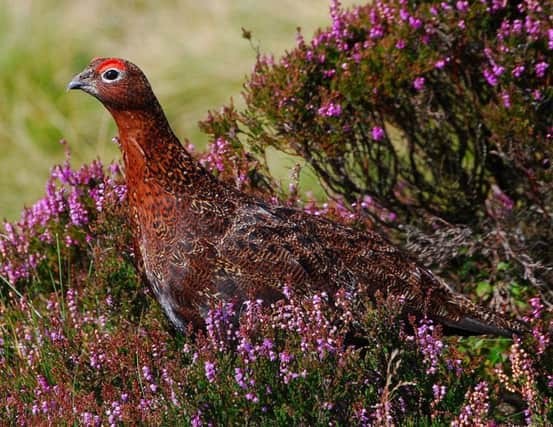Country & Coast: Return of pale-pink eye candy


On a glorious afternoon drive across the tops from Egton Bridge to Rosedale Abbey at the weekend the road verges were lined with the almost neon lilac colour of bell heather, the first species to come into bloom. In the next couple weeks will follow the main event, the flowering of great velvet sheets of pale-pink ling heather across the North York Moors as far as the eye can see.
Heather moorland is a habitat which we in Yorkshire perhaps take for granted, yet globally there’s less of it remaining than tropical rainforests. Here’s why we should pay it more respect: three quarters of heather on the planet is found in Britain, and the North York Moors has the largest continuous area in the whole of England and Wales.
Advertisement
Hide AdAdvertisement
Hide AdSadly, it is a shrinking resource. At the end of the 17th century there were an estimated 10 million acres of British uplands, but now the figure is more like two million acres.
Bell and ling heathers are associated with drier soils, and the third species found on the moors - cross-leaved heath heather - covers boggy areas. Today the vast tracts of heather in the North York Moors National Park are protected as a Site of Special Scientific Interest and managed with rotational burning to promote new growth, which also happens to provide young shoots as food for sheep and red grouse.
Within living memory, heather was cut and utilised in a variety of ways. The flowers produced an orange dye, but the stalks were especially useful.
The clue to ling’s history, in fact, is its Latin name Calluna vulgarise. Calluna translates as “to sweep”, and the heather was tied round a length of wood and used to sweep floors.
Advertisement
Hide AdAdvertisement
Hide AdIts springiness made it popular as the filling for primitive mattresses. It was also used as fuel where wood was scarce, and for centuries ling provided the thatching for roofs of houses in the North York Moors. It was harvested while in flower, and according to one builder “laid with the roots entwined and pointed upwards.” An example can be seen in Ryedale Folk Museum at Hutton-le-Hole.
Heather thatching died out in the 19th century, however, and heather is considered too endangered a resource to be put to commercial use, unlike in Scotland where there’s such an abundance of ling that harvesting of the flowering tips is allowed in July and August for use in a very popular beer, Fraoch Ale. The flowers are added as flavouring to malted barley instead of hops and, tasting bitter-sweet with a note of honey, it has been a huge success north of the border.
There appears to be no damage caused to the heather plants, so perhaps Yorkshire Heather Ale is a business opportunity awaiting some enterprising brewer, although finding a source for the heather might be both difficult and controversial.